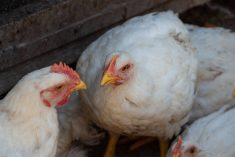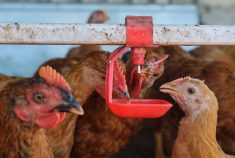Feeder cattle prices in Alberta and Saskatchewan were steady to $1 higher last week; U.S. values were $1 to $3 higher for yearlings while lighter calves traded $2 higher to $2 lower. Most of the auction market activity occurred before the surge in U.S. fed cattle prices. Nebraska steers jumped $5 to $7 last week, reaching $100 per hundredweight (cwt). Beef wholesale values are also percolating higher as packers struggle to cover nearby requirements. Canadian fed prices are lagging the U.S. market but buying enthusiasm stayed strong for yearlings last week. Calf prices are trailing the yearling market but will likely pick up later in November, after the heavier feeder cattle have moved through the system.
Read Also

CFIA adds controls for imports of Spanish feed ingredients after African swine fever outbreak
The Canadian Food Inspection Agency (CFIA) has added Spain to a list of countries subject to feed import controls due to an outbreak of African swine fever in that country.
Given the current margin structure of Nebraska and Alberta feedlots, Manitoba feeder cattle should move south instead of west in September when larger supplies come available. If feeder cattle exports stay under 15,000 head per month, further upside will be limited in the western Canadian feeder market and cash prices may actually stagnate throughout the fall.
Looking at past history, U.S. cow-calf producers generally need one year of very strong prices before they move into the expansion phase. Therefore, the cattle herd will contract in 2010 and 2011 and it may be late 2012 or 2013 before we see year-over-year increases in North American feeder cattle numbers.
The cattle markets have shrugged off the recent bout of negative economic data. During 2009 and the first half of 2010, we experienced the “financialization” of commodity and equity markets. When the Dow Jones industrial average (DJIA) was higher, feeder cattle and other commodities moved in tandem. Cattle and meat prices have now divorced from broad-based financial and energy markets due to the tight supplies.
— Jerry Klassen is a commodity market analyst in Winnipeg and maintains an interest in the family feedlot in southern Alberta. He writes an in-depth biweekly commentary, Canadian Feedlot and Cattle Market Analysis, for feedlot operators in Canada. He can be reached by email at [email protected] or 204-287-8268 for questions or comments.
The material contained herein is for information purposes only and is not to be construed as an offer for the sale or purchase of securities, options and/or futures or futures options contracts. While the information in this publication cannot be guaranteed, it was obtained from sources believed to be reliable. The risk of loss in futures trading can be substantial. The article is an opinion only and may not be accurate about market direction in the future. Do not use this information to make buying or selling decision because adverse consequences may occur. This information may be wrong and may not be correct about current market conditions in all areas of Canada. This is an opinion only and not based on verified facts.














